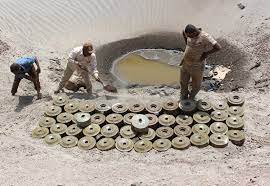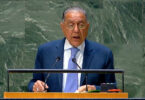DUBAI (AFP): Yemen has one of the world’s highest rates of contamination with land mines and other deadly explosives, the International Committee of the Red Cross has warned, nine years after the start of the brutal civil war.
The impoverished Arab nation, plunged into conflict when Iran-backed Houthi rebels seized the capital in September 2014, is among the three worst affected countries, the ICRC said.
Experts estimate that at least one million mines have been planted during Yemen’s years of turmoil, causing a daily hazard along with unexploded shells and other military detritus.
“When it comes to weapon contamination, with Afghanistan and Iraq, Yemen is among the three countries most affected by this,” Fabrizio Carboni, the ICRC’s Near and Middle East regional director, told AFP.
“It is really devastating and has a very important impact on people, their safety, and also their livelihood.”
A Saudi-led military coalition has been fighting the Houthis since March 2015 in a conflict that has left hundreds of thousands dead from direct and indirect causes such as famine.
According to the UN-linked Civilian Impact Monitoring Project, land mines, unexploded shells and other leftovers from fighting caused 1,469 civilian casualties over the past five years.
“The presence of unexploded ordnance is just massive,” said Carboni.
Twenty percent of livestock owners living in two areas close to frontlines reported explosives contamination on their land, the ICRC found after conducting a series of interviews last year.
Another ICRC survey of shepherds found that 70 percent had lost animals to land mines and other explosives.
“The contamination is so important and widespread that you won’t be in a position to decontaminate everything,” even if the conflict ended today, Carboni said.







